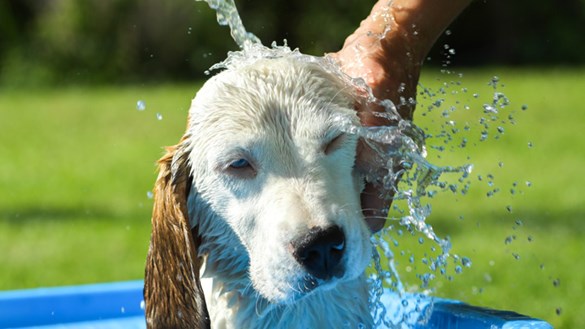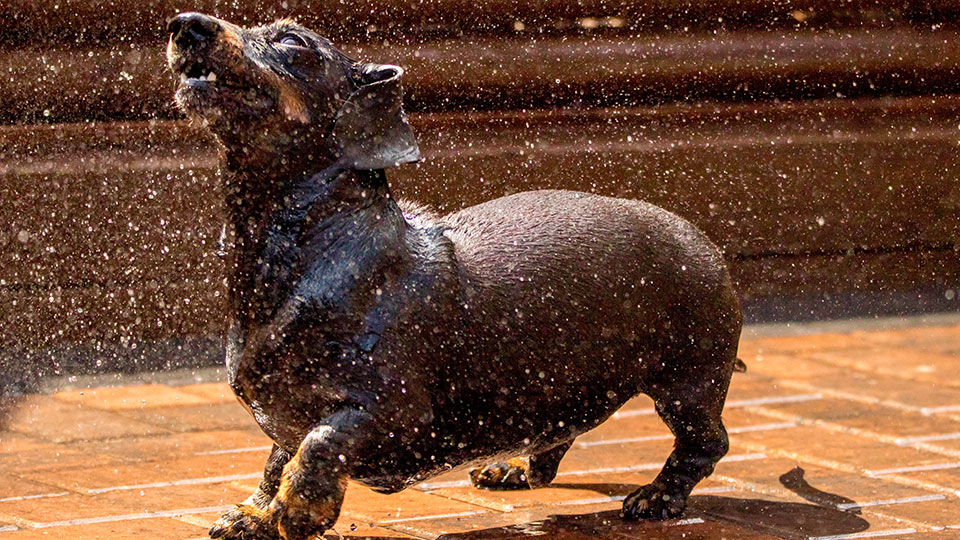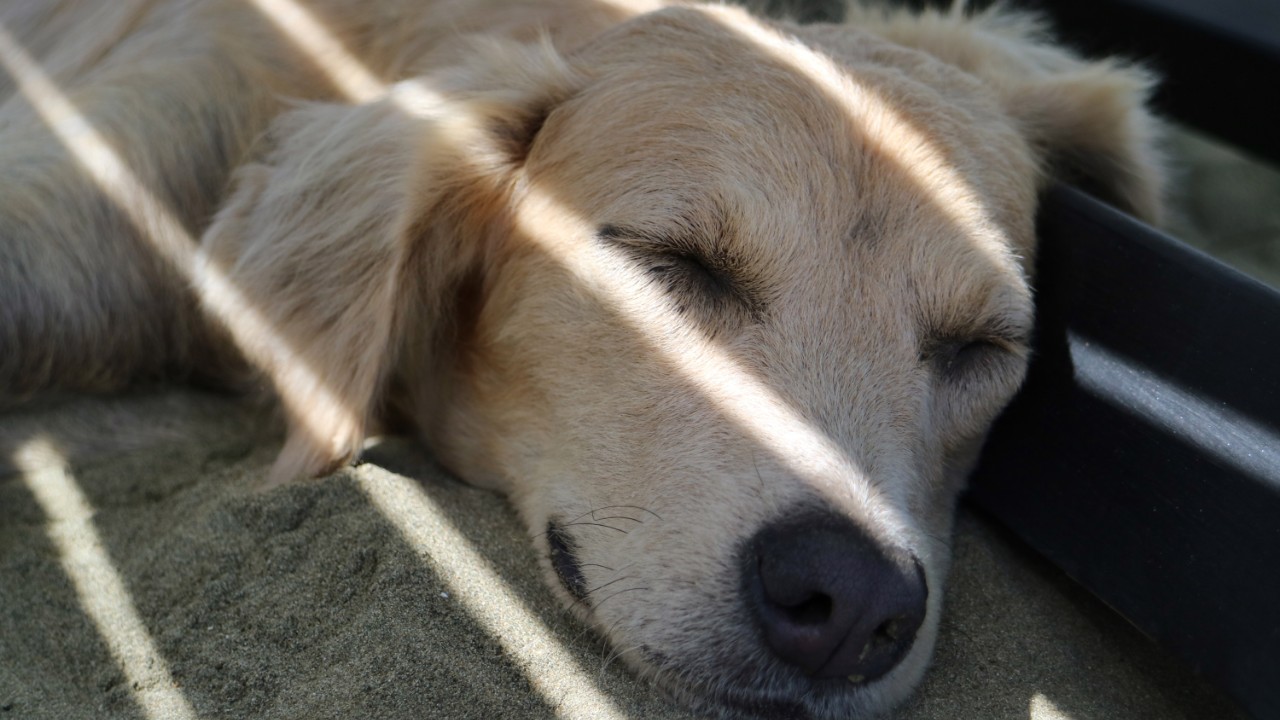Heatstroke In Dogs
Heatstroke in dogs can be fatal. Find out how to spot the signs of heatstroke in dogs and how it can be treated and prevented.

What is heatstroke in dogs?
Summer means longer days, warmer weather and more time outside playing with your dog. However, it’s important to remember that dogs can be much more sensitive to the heat than us, with heatstroke being one of the most common illnesses during the warmer months. Although the condition is more common in periods of hot weather, it can occur in colder months – particularly if there are sudden changes in temperature from cool to warm that dogs have little time to acclimatise to. There is no set temperature that triggers heat stroke cases, and individuals who experience intense periods of exercise, flat faced breeds or heavy coated breeds may develop heatstroke symptoms more commonly in cooler conditions. It is a challenging condition to predict.
Dogs regulate their temperate by sweating through their paw pads, noses and panting. This means they’re much less efficient at cooling themselves down when things get too hot.
Heatstroke happens when dogs are no longer able to regulate their temperature and their internal body heat becomes dangerously high, usually around 40°c. Heatstroke can be fatal if left untreated, so emergency first aid is essential to cool them down.
Breeds with thick fur, short noses and dogs with pre-existing medical conditions, such as obesity, are at a higher risk of heatstroke. Similarly, extremely active or working dogs are more susceptible. However, it’s important to remember that any dog can develop heatstroke and should be watched carefully during hot weather.
Signs and symptoms on heatstroke in dogs
The symptoms of heatstroke in dogs include:
- Excessive panting
- Excessive thirst
- Barking or whining
- Very red gums
- Drooling more than usual
- Rapid heart rate
- Lethargy
- Vomiting or diarrhoea
- Staggering, weakness or collapsing
If you spot any of these signs, emergency treatment is needed straight away.

- 40°C- the temperature at which your dog can no longer regulate their body temperature
- 43°C- the temperature inside your car after half an hour on a mild, 23°C day
- 10 minutes- the time it takes for the inside of your car to hit 43°C when it's 32°C outside
- 54°C- the temperature your car will reach after 30 minutes in 35°C weather
- 'Not long'- the time it takes for your dog to suffer from potentially fatal heatstroke
Don't leave your dog in a hot car this summer.
Treatment for heatstroke in dogs
If your dog is suffering from heatstroke, YOU MUST TAKE ACTIONS TO COOL THEM IMMEDIATELY AND THEN CONTACT YOUR VET. You should take measures to cool your dog down whilst they are being transported to the vet.

How to cool a dog down
You’ll need to cool your dog down as quickly as possible to lower their internal temperature:
- Take them out of the heat and into a cool environment
- Use water (if unavailable any non-toxic available fluid) that is colder than your dogs body temperature. There is some professional debate surrounding water temperatures, but current consensus is the colder the fluid the better
- Stand them in water and shower them with a hose all over their body. If you have a double or deep coated dog, you may wish to brush the fur in the opposite direction to make sure the fluid is contacting the skin. Ensure your dogs feet, armpits and groin are all thoroughly soaked
- When driving to the vet, open the windows to allow a cool breeze or if possible put air conditioning systems on maximum cool settings
- Let your dog drink as much water as they want, but don’t force them
Even if they’ve sufficiently cooled down, dogs still need proper veterinary care to maintain their blood pressure, monitor for further complications and treat signs of shock.
How to prevent heatstroke in dogs
The best cure is always prevention, so keeping your dog cool and hydrated is the best way to prevent heatstroke.
Try and limit exercise and outdoor activities in very hot or humid weather and provide plenty of shade and water. Switch up your walks so that they occur at the cooler times of day, i.e. early morning or late evening. You could set up a sprinkler or let your dog splash about in a shallow pool to keep them keep cool while having fun.

Never leave your dog in hot, confined areas such as a car, even with the windows open. Even on mild days, the temperature inside a car can skyrocket to 50°c within minutes.
Keep thick, long-haired breeds trimmed regularly (although remember to leave enough fur to protect their skin from sunburn).
Dogs also need to drink plenty of water to stay hydrated in the heat. Check out our advice for keeping your pet hydrated.
We’ve got some great tips for looking after your dog in hot weather.



